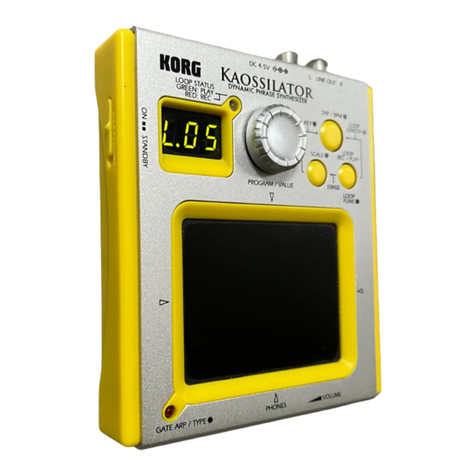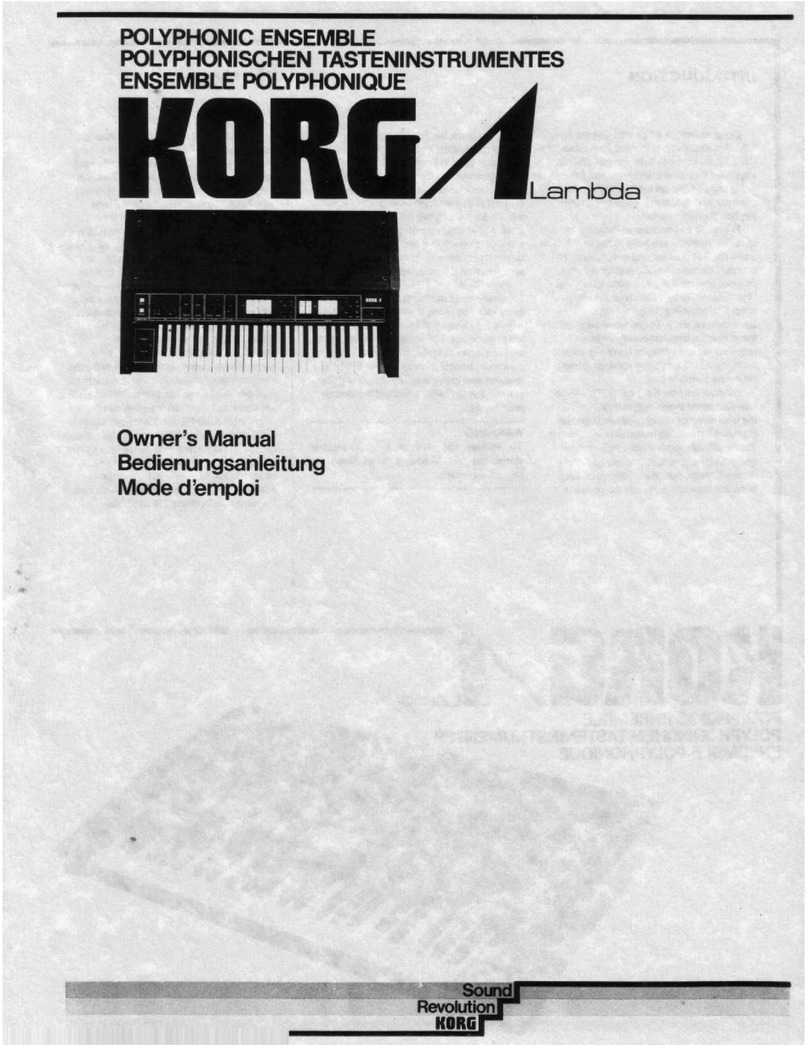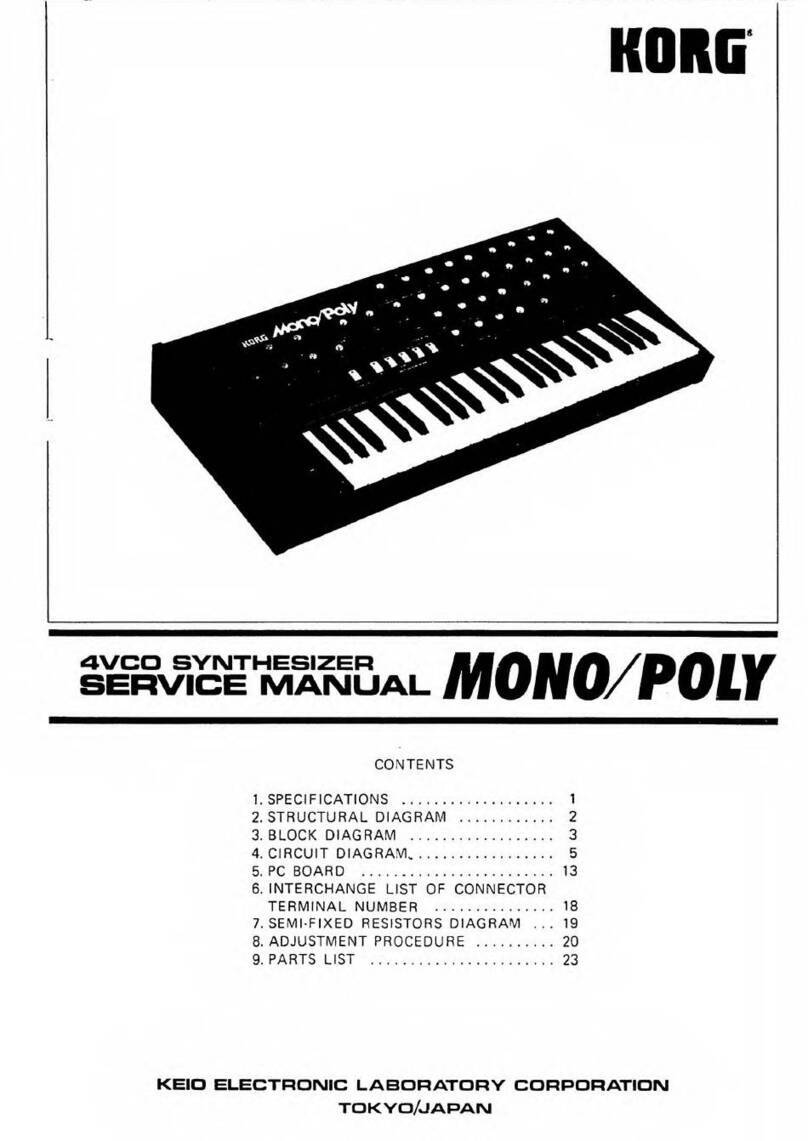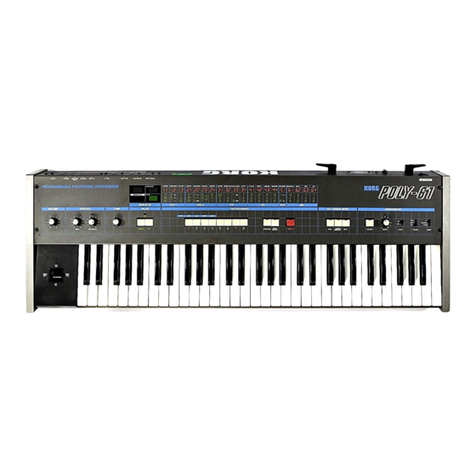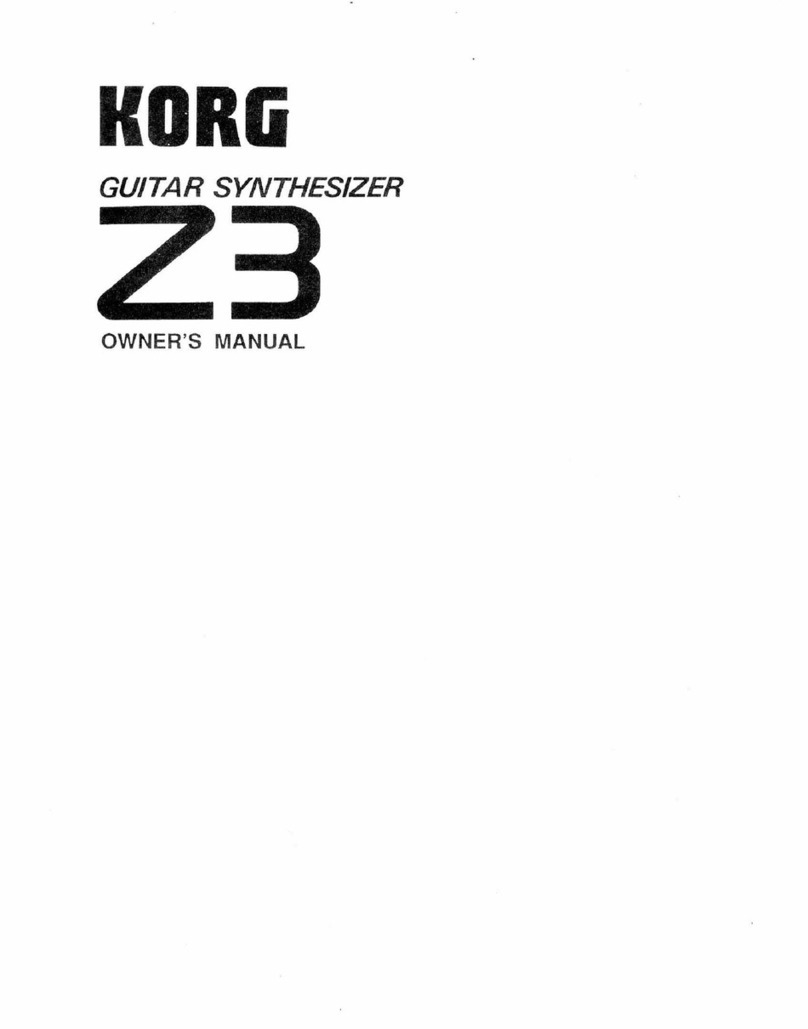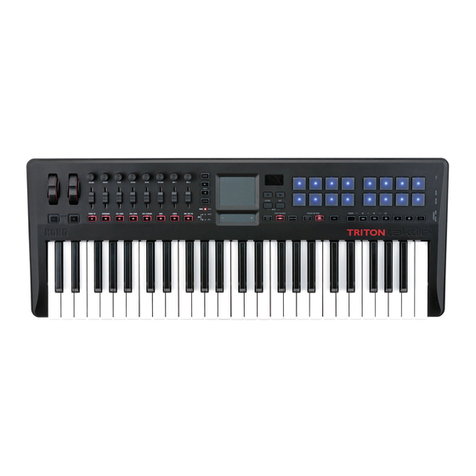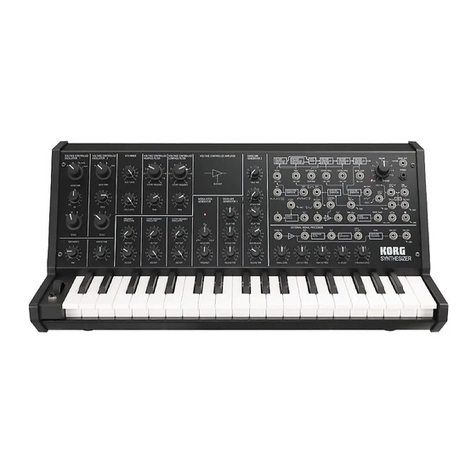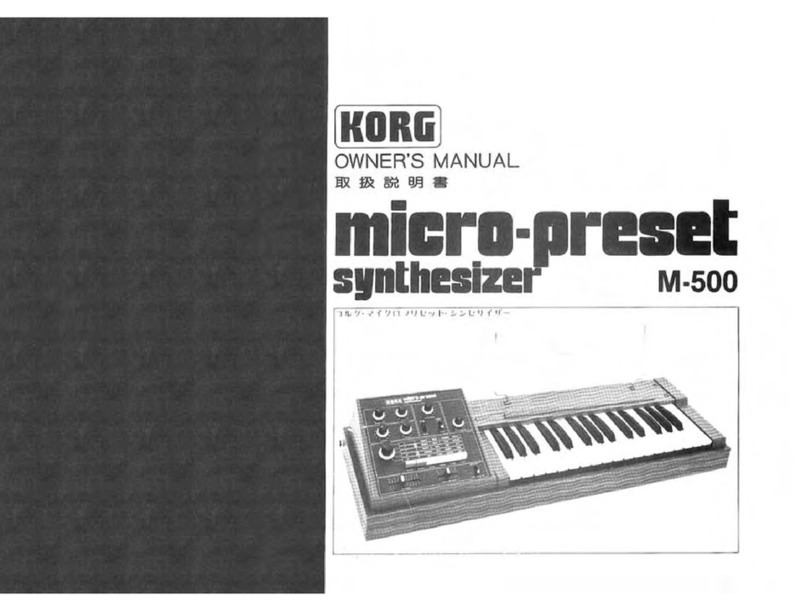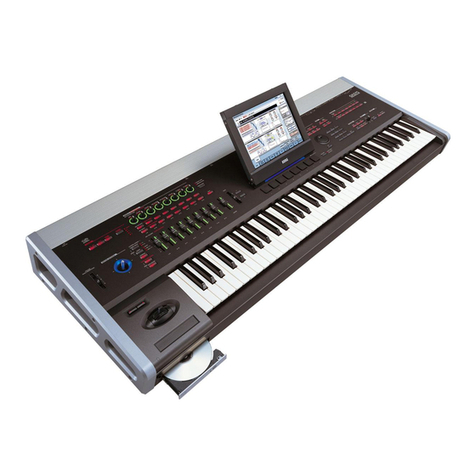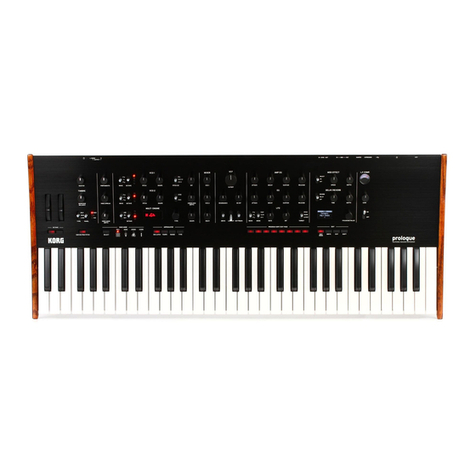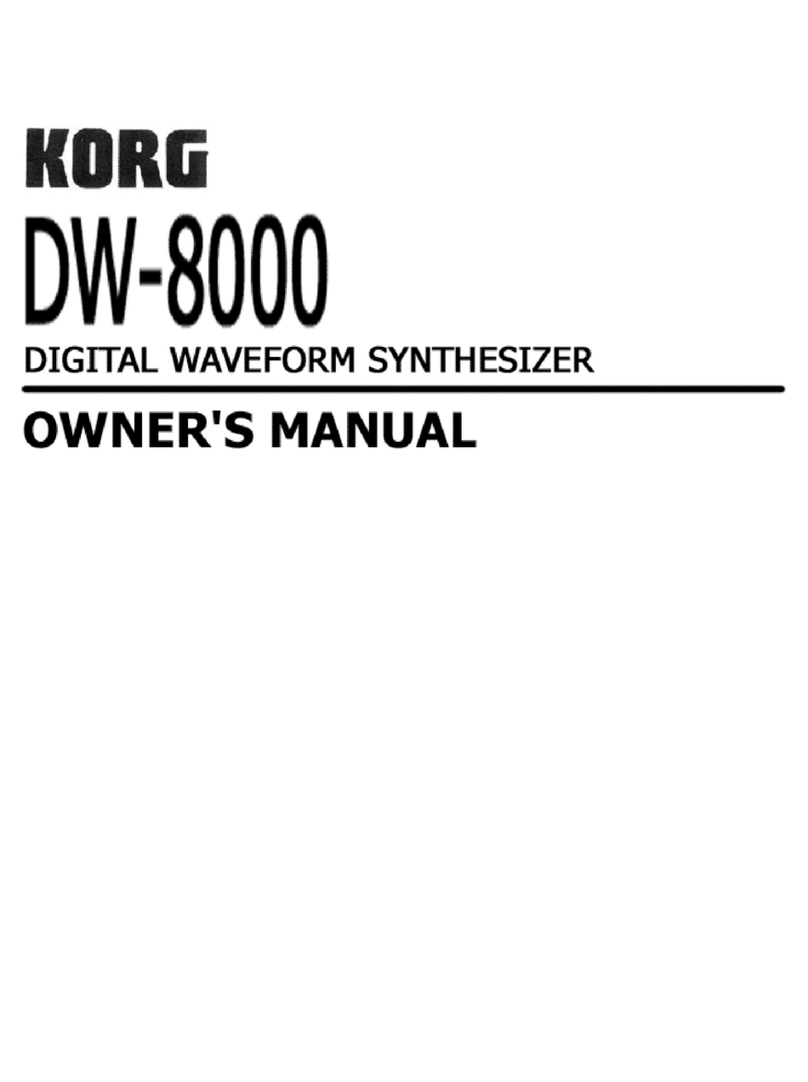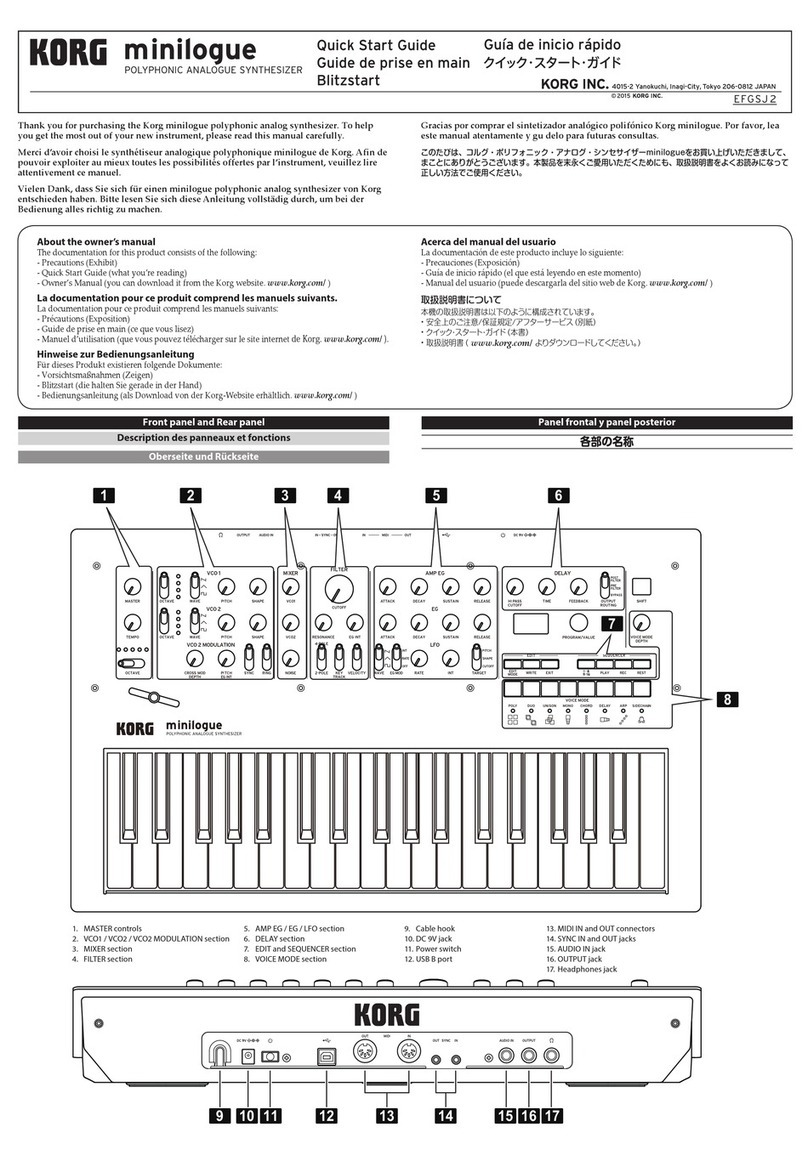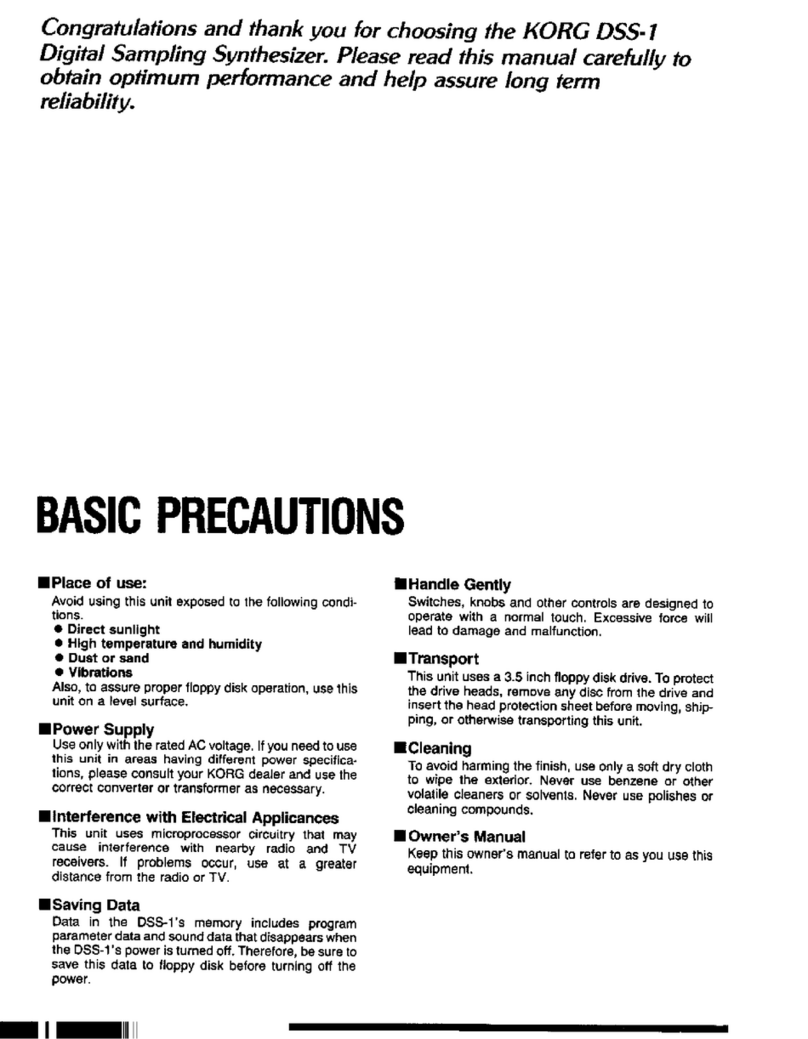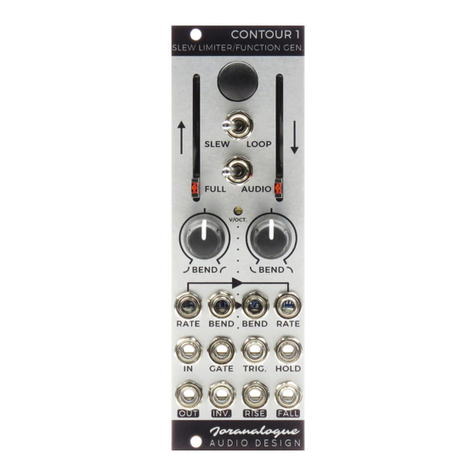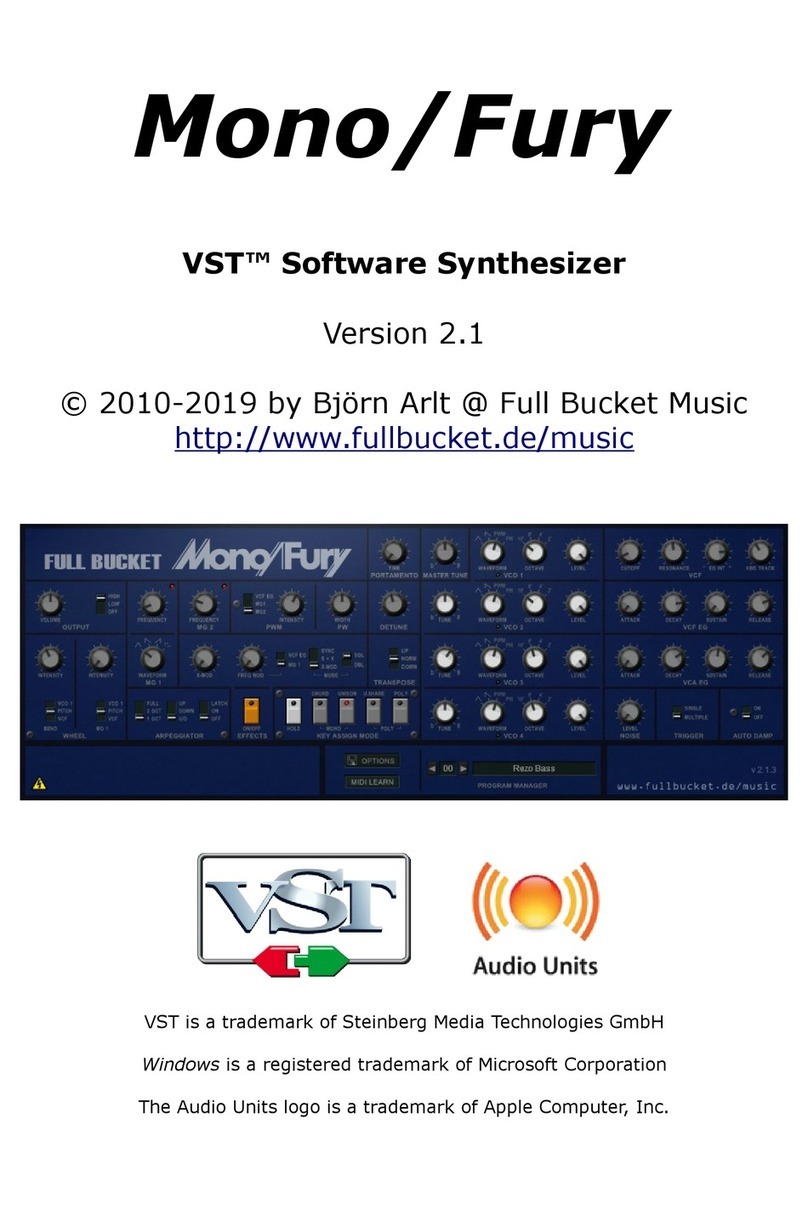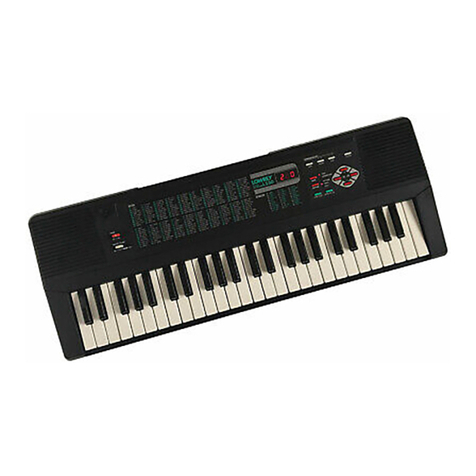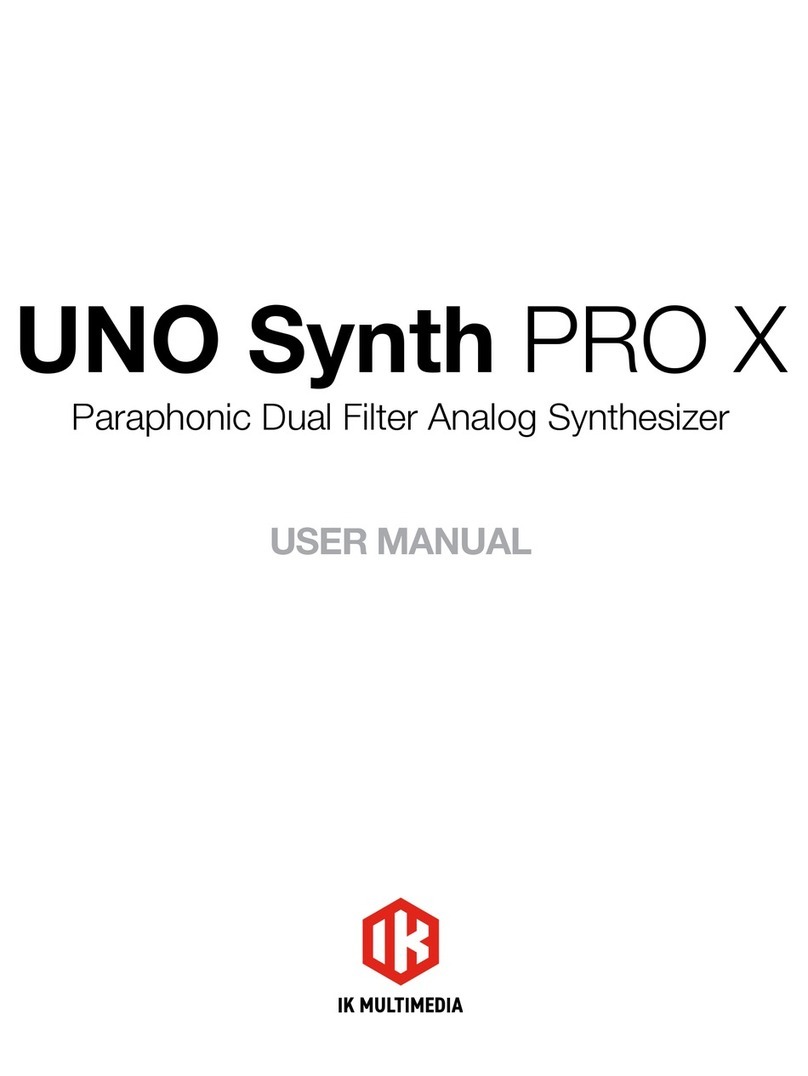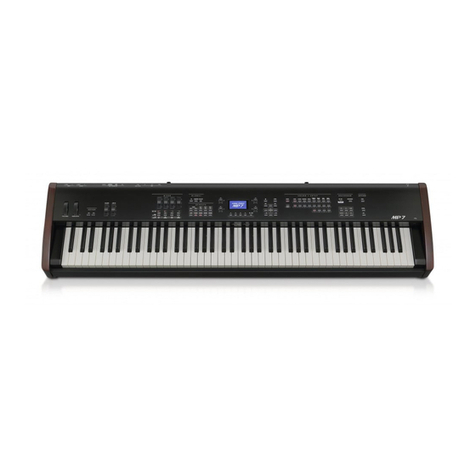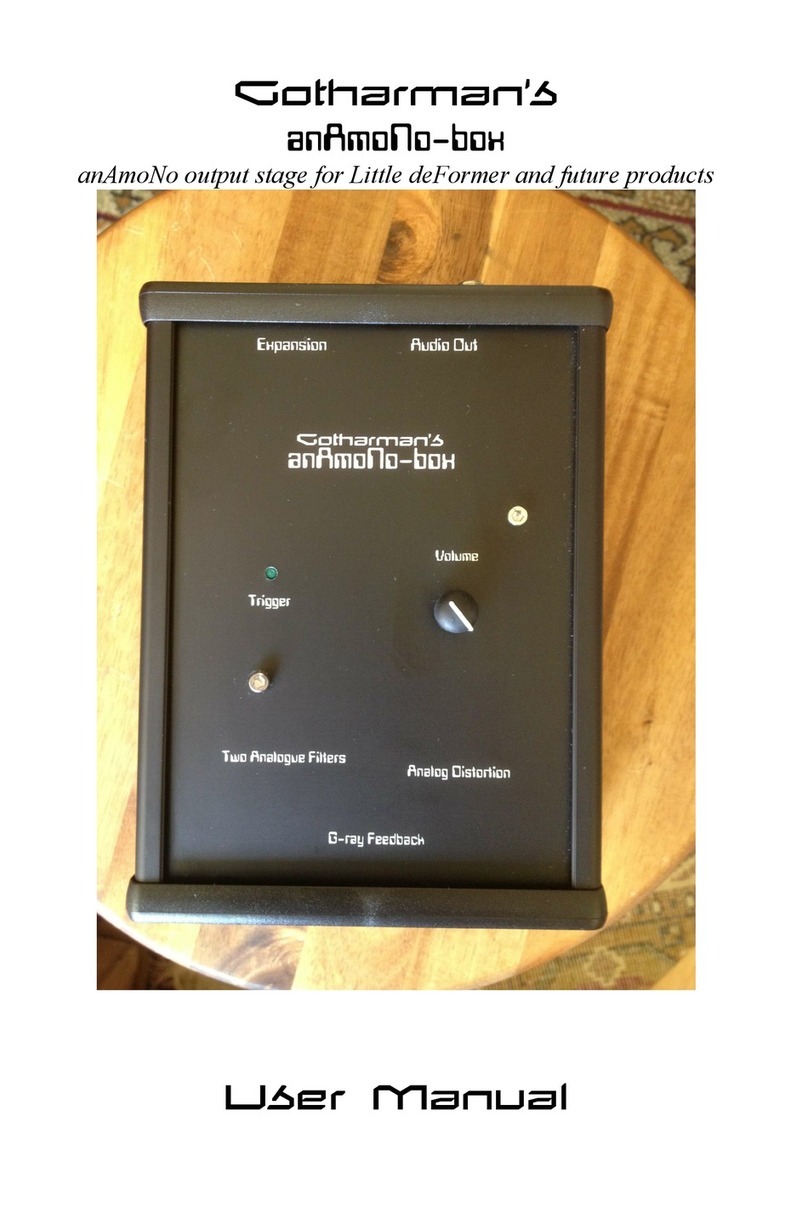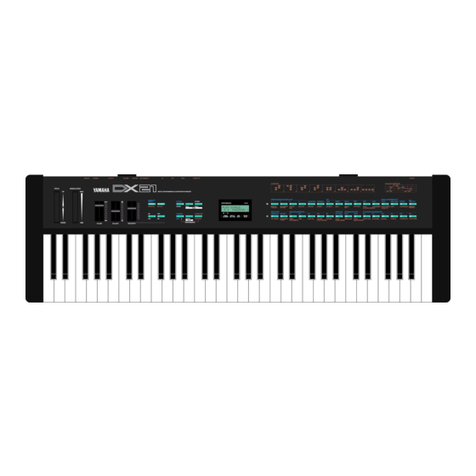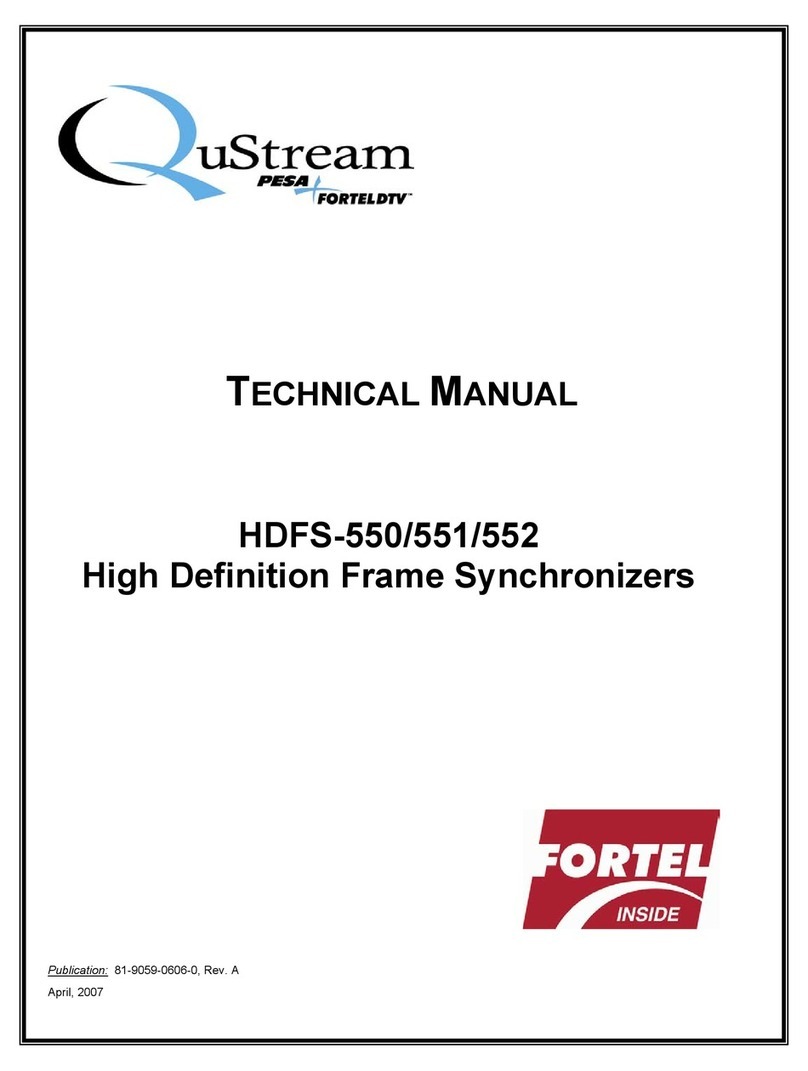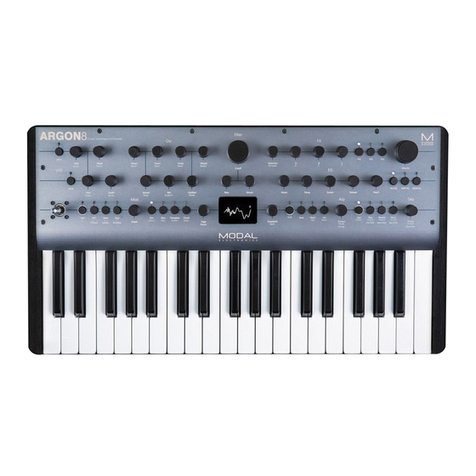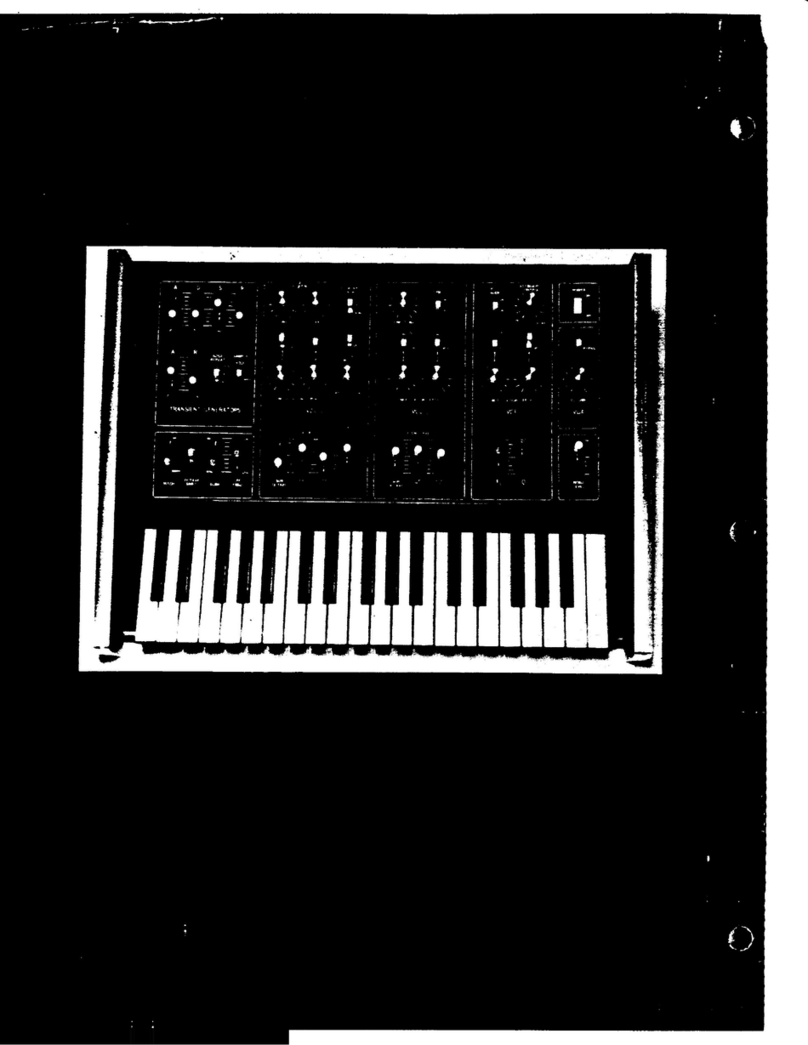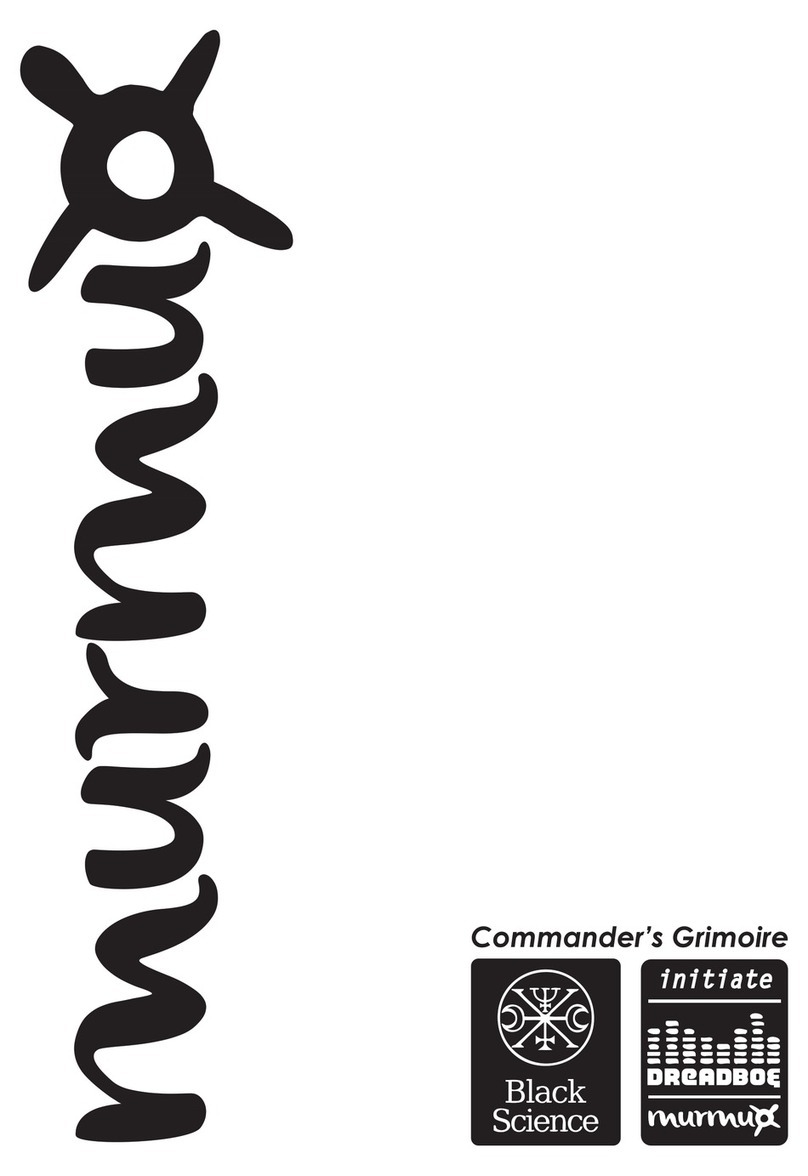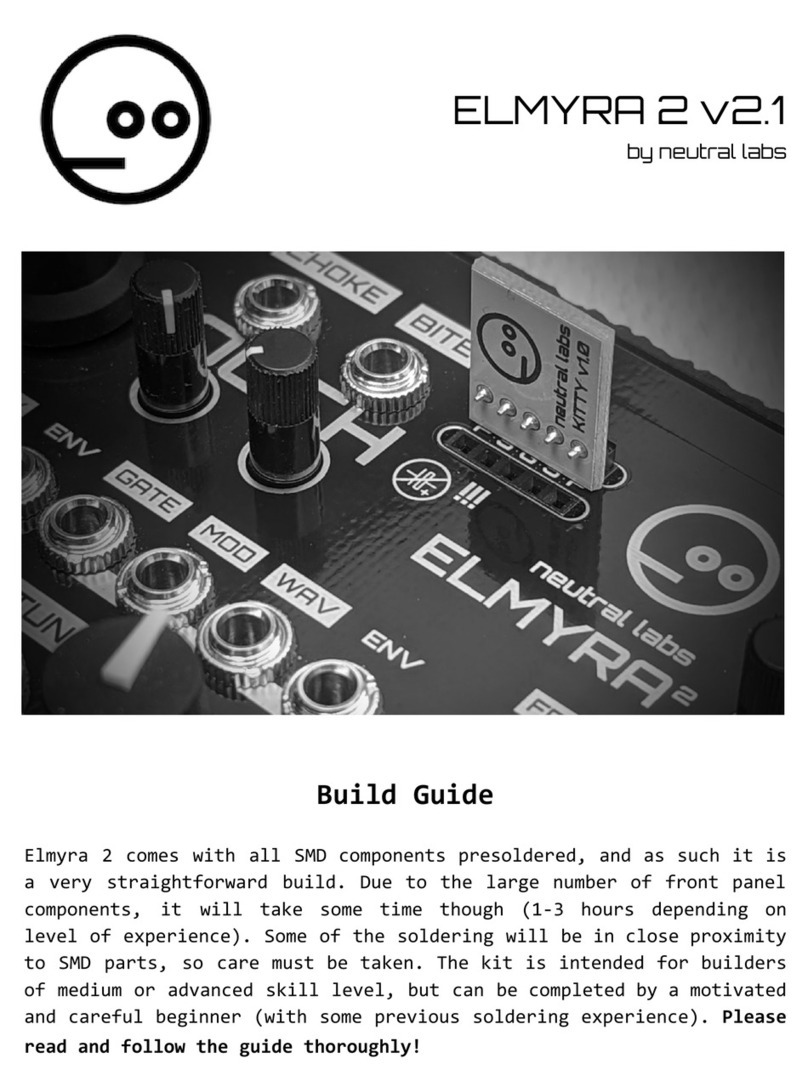
microKORG EasyStart
Selecting and Playing Programs:
1. Turn the PROGRAM SELECT knob to select the musical genre/program bank and use the PROGRAM NUMBER keys to
select any of the eight programs in that bank.
2. To select programs in bank B, press the SIDE A / SIDE B key.
Editing Programs using the Performance Edit Mode:
1. Select a program using the steps outlined above.
2. Turn any of the 5 Real-time control knobs to change the performance edit parameters (CUTOFF, RESONANCE, EG
ATTACK, EG RELEASE, TEMPO).
3. If you wish to store your edited Program, follow the Storing an Edited Program procedure outlined below.
! Each of the five Real-time control knobs send out MIDI control change numbers, so all of your performance moves can be
recorded to an external MIDI sequencer and played back.
Editing Programs using the EDIT SELECT knobs:
1. Select a program you wish to edit using the steps outlined above.
2. To edit one of the parameters in the EDIT SELECT 1 area, turn the EDIT SELECT 1 knob to the desired parameter
section.
3. Reading from left to right on the Edit Grid Matrix, find the parameter that you would like to change/adjustand turn the
realtime control knob directly above it. You may have to turn the knob to the left or right until it “catches” (finds the original
setting) the current value before you can change it. Once it “catches” the current value the LCD display will stop blinking.
4. To edit one of the parameters in the EDIT SELECT 2 area, turn the EDIT SELECT 2 knob to the desired parameter and
follow the steps outlined in step 3.
5. To jump between EDIT SELECT 1 andEDIT SELECT 2, press and hold the SHIFTkey and then press the SIDE A /
SIDE B key.
6. To return to Performance edit mode, press the PROGRAM NUMBER key that is currently lit. You will see both LED 1and
2in the Edit Grid Matrix on at the same time.
7. To store your edited program, follow the Storing an Edited Programprocedure outlined below.
! The Edit Knobs perform two different functions. When both of the EDIT SELECT LEDs are lit, the knobs are in the
Performance Edit mode, and will perform their preset functions of Cutoff, Resonance, etc… If only one of the LEDs is lit,
then the Edit Knobs are in the Program Edit mode, and the knobs will change the value of the individual parameters.
! All of the parameters of the microKORG are assigned to MIDI control change numbers and can also be edited or changed
in realtime from an external MIDI sequencer or controller. Refer to the Owner’s Manual for more info on Control Change
Numbers.

